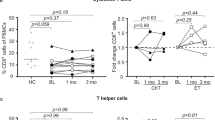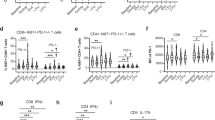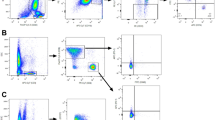Abstract
An immunological profile has been serially studied in 72 patients with advanced breast cancer during the course of a randomized trial of chemotherapy and hormonal manipulation. DNCB+ patients were more likely to respond to either therapy, but no other test was predictive of response. In the follow-up period all chemotherapy patients had a reduction in white-cell count which was significantly greater in those responding to treatment. None of the other tests (phytohaemagglutinin response, immunoglobulins G, A and M, or Mantoux test) demonstrated changes that could be related to treatment or response, but there was a gradual unexplained fall in IgM levels in all groups the study progressed. It is concluded that the chemotherapeutic regimen (cyclophosphamide, vincristine, adriamycin and 5-fluorouracil) is relatively non-immunosuppressive, and that hormonal therapy (oophorectomy, tamoxifen or androgens) had no detectable effect on the immune response.
This is a preview of subscription content, access via your institution
Access options
Subscribe to this journal
Receive 24 print issues and online access
$259.00 per year
only $10.79 per issue
Buy this article
- Purchase on Springer Link
- Instant access to full article PDF
Prices may be subject to local taxes which are calculated during checkout
Similar content being viewed by others
Rights and permissions
About this article
Cite this article
Webster, D., Richardson, G., Baum, M. et al. Effect of treatment on the immunological status of women with advanced breast cancer. Br J Cancer 39, 676–680 (1979). https://doi.org/10.1038/bjc.1979.119
Issue Date:
DOI: https://doi.org/10.1038/bjc.1979.119
This article is cited by
-
In vivo modulation of natural killer cell activity by tamoxifen in patients with bilateral primary breast cancer
Cancer Immunology Immunotherapy (1993)
-
The immunological status of breast cancer patients during treatment with a new antiestrogen, toremifene
Cancer Immunology Immunotherapy (1990)



